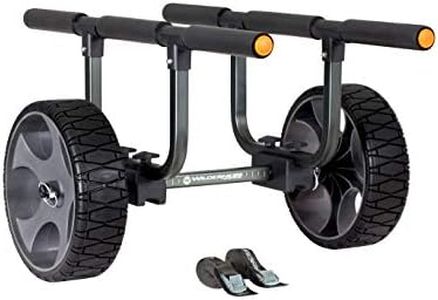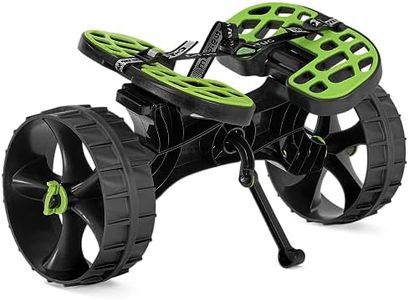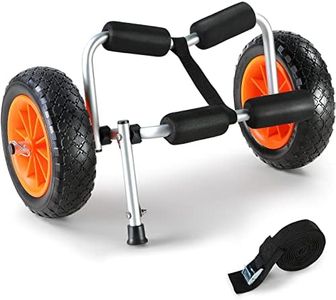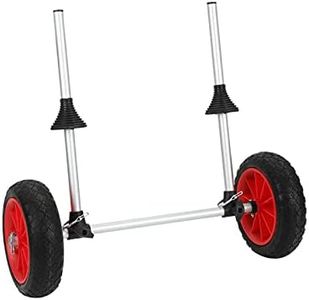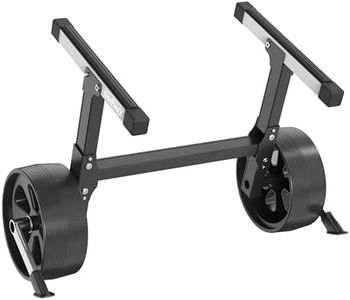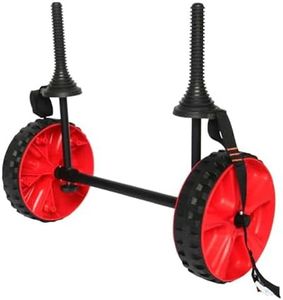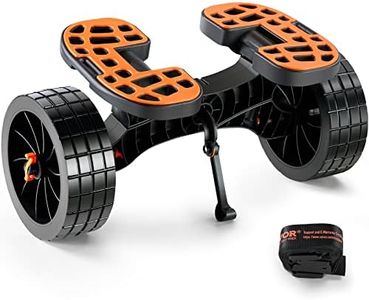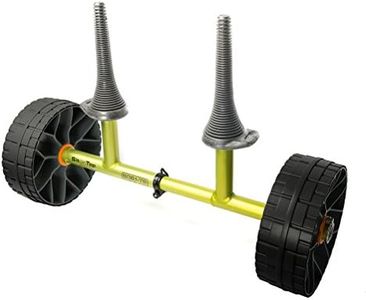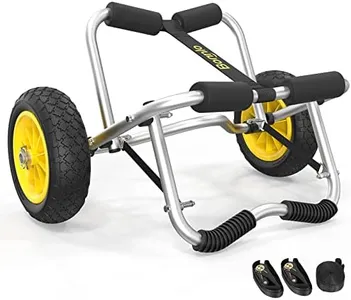We Use CookiesWe use cookies to enhance the security, performance,
functionality and for analytical and promotional activities. By continuing to browse this site you
are agreeing to our privacy policy
10 Best Canoe Carts
From leading brands and best sellers available on the web.Buying Guide for the Best Canoe Carts
Choosing the right canoe cart makes transporting your canoe much easier and prevents unnecessary strain or damage, whether you're shooting for a solo adventure or carrying gear with friends. Focus on features that match your canoe, the types of terrain you'll cross, and your own physical needs. A thoughtful selection will save you time and effort, letting you spend more energy on paddling instead of hauling.Weight CapacityWeight capacity describes how much the cart can safely carry. This is important because if your canoe and gear exceed the cart’s limit, you risk damaging the cart or making transportation difficult. Lightweight carts (under 100 lbs capacity) are good for solo or small canoes with minimal extra gear, while mid-range capacities (100–200 lbs) offer more flexibility for average-sized canoes plus some equipment. Heavy-duty carts (over 200 lbs) suit large or tandem canoes, especially when carrying lots of camping or fishing supplies. Think about the usual total weight you'll need to move, including your canoe and anything stowed inside, to choose the right range.
Wheel Type and SizeWheel type refers to the material (like plastic, rubber, or pneumatic/air-filled) and the wheel size, both of which greatly impact how easily you can roll the cart over different surfaces. Small solid wheels are best for paved or hard-packed paths, as they’re durable but not great for uneven terrain. Larger or air-filled wheels handle sand, gravel, and rough ground much better. Choose small, hard wheels if you always use docks or flat terrain; go bigger and softer if you’ll cross beaches, forest trails, or bumpy areas.
Frame Material and DurabilityFrame material, usually aluminum, steel, or plastic, affects both weight and strength. Aluminum frames are lightweight and rust-resistant, making them good for wet environments; steel frames are ultra-strong but heavier and may rust if not cared for; plastic frames are very light but generally support less weight. For most regular paddlers, aluminum balances strength and portability well. If you need to transport especially heavy loads or want absolute longevity, steel might suit you. Always match material durability with how rough you’ll be and how often you plan to use the cart.
Portability and StoragePortability means how easy it is to fold, disassemble, or fit the cart into your vehicle or canoe. Some models fold flat or break down into pieces, making storage a breeze. This is crucial if you have little space in your car or canoe, or if you’ll carry the cart during your paddling trip. Choose a compact, folding model if space is limited or if you plan to take your cart along on the water; opt for a solid, non-folding cart if you’ll transport it separately or have plenty of storage.
Canoe Attachment MethodThe way your canoe is secured to the cart—using straps, cradles, or bunks—influences both stability and ease of use. Simpler strap systems are flexible and fit many hull shapes but might need frequent adjustment. Cradle or bunk systems hold the canoe steady and minimize slipping, especially on uneven terrain. Think about whether you need extra stability for rugged paths, or prefer a quick-on, quick-off system for smooth launches to know which attachment is best for you.

